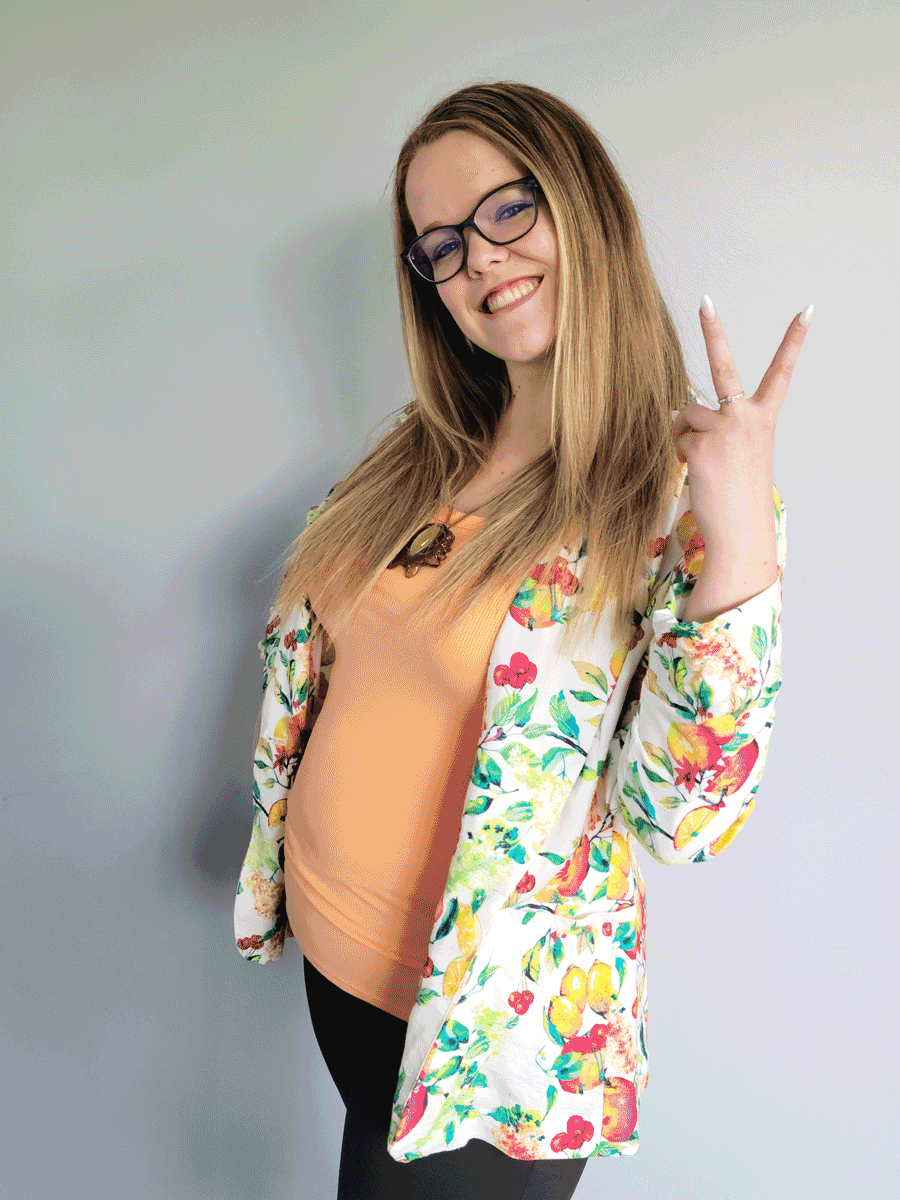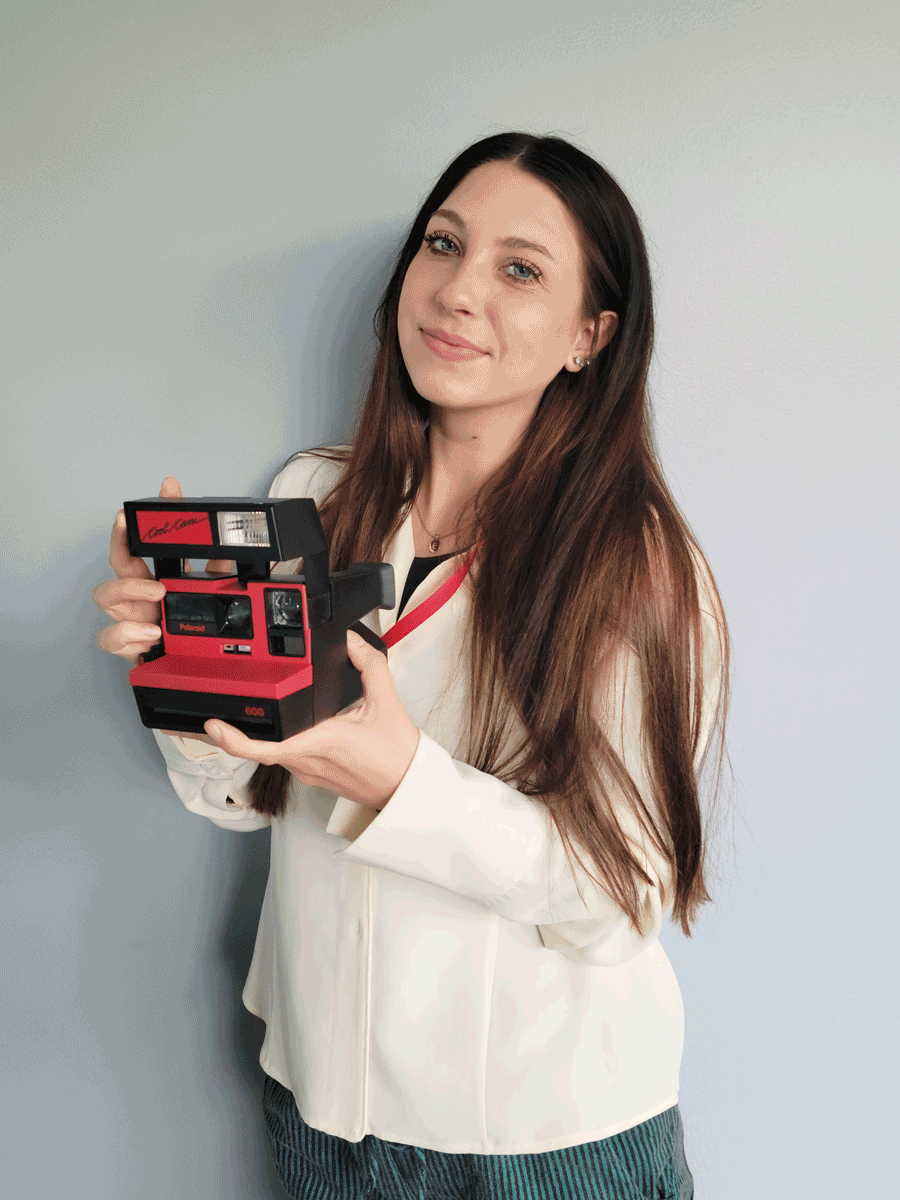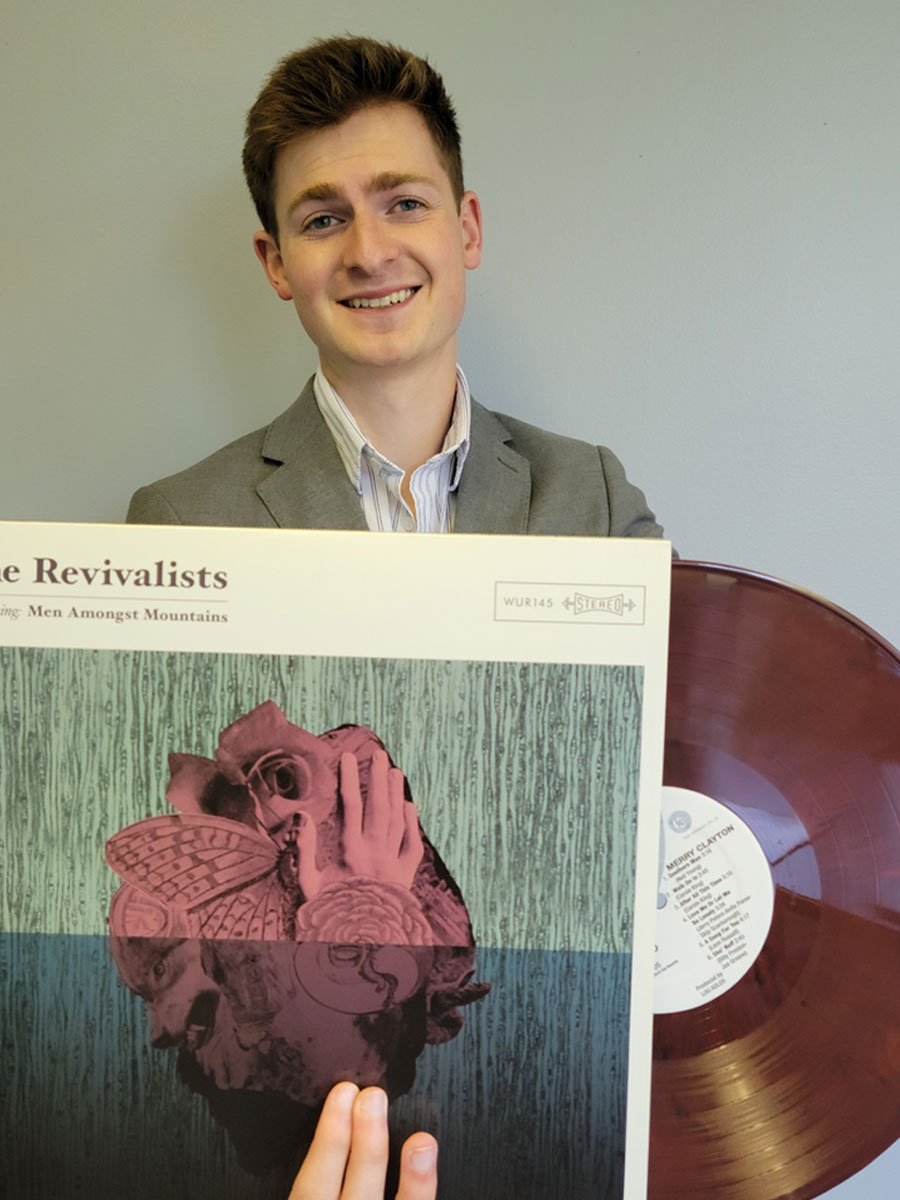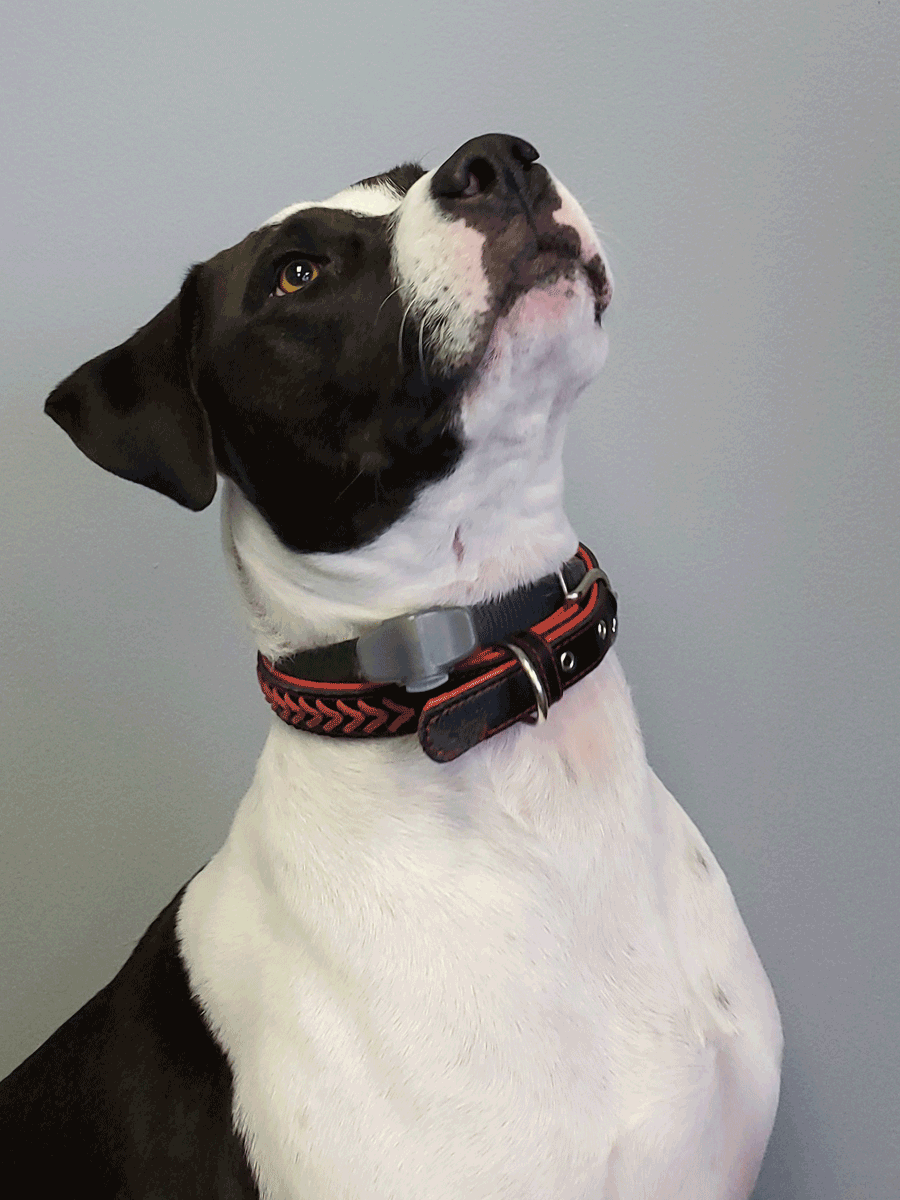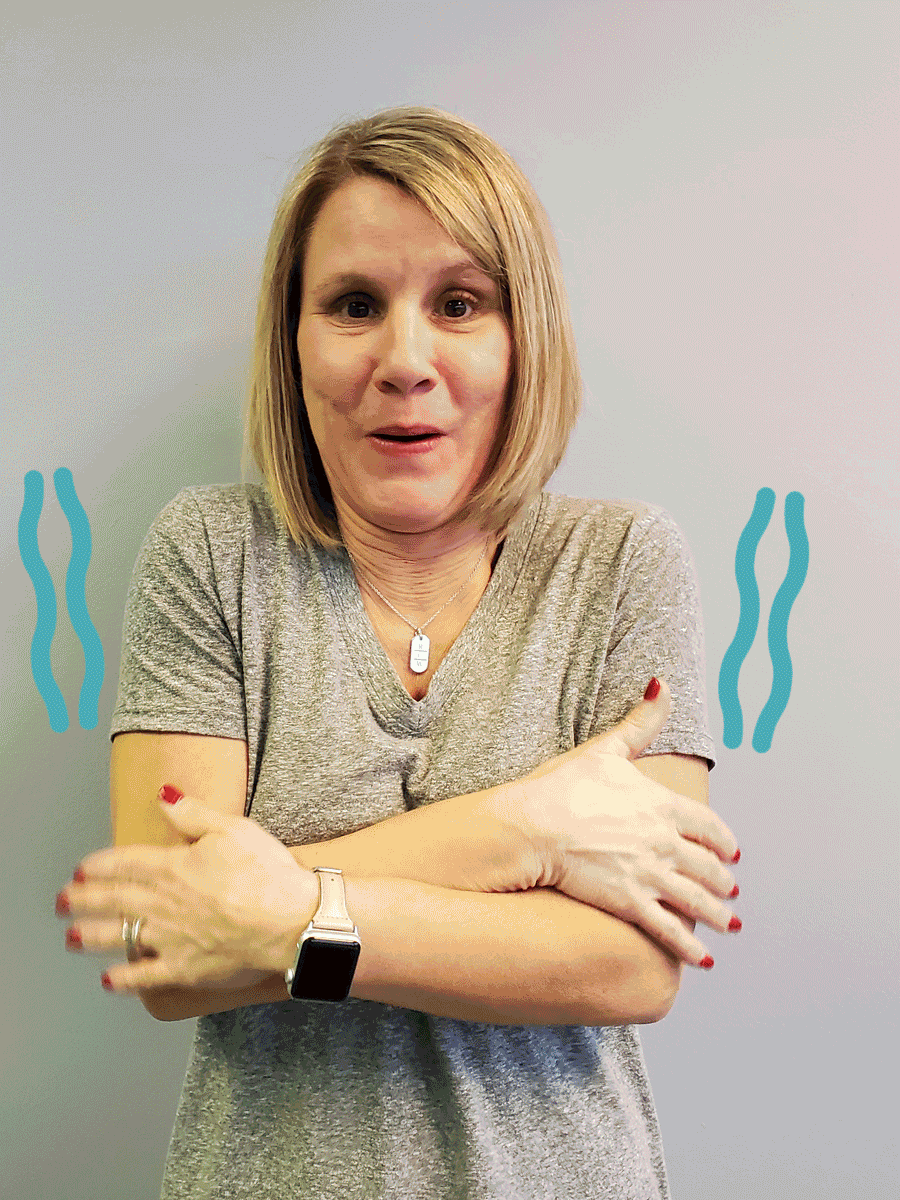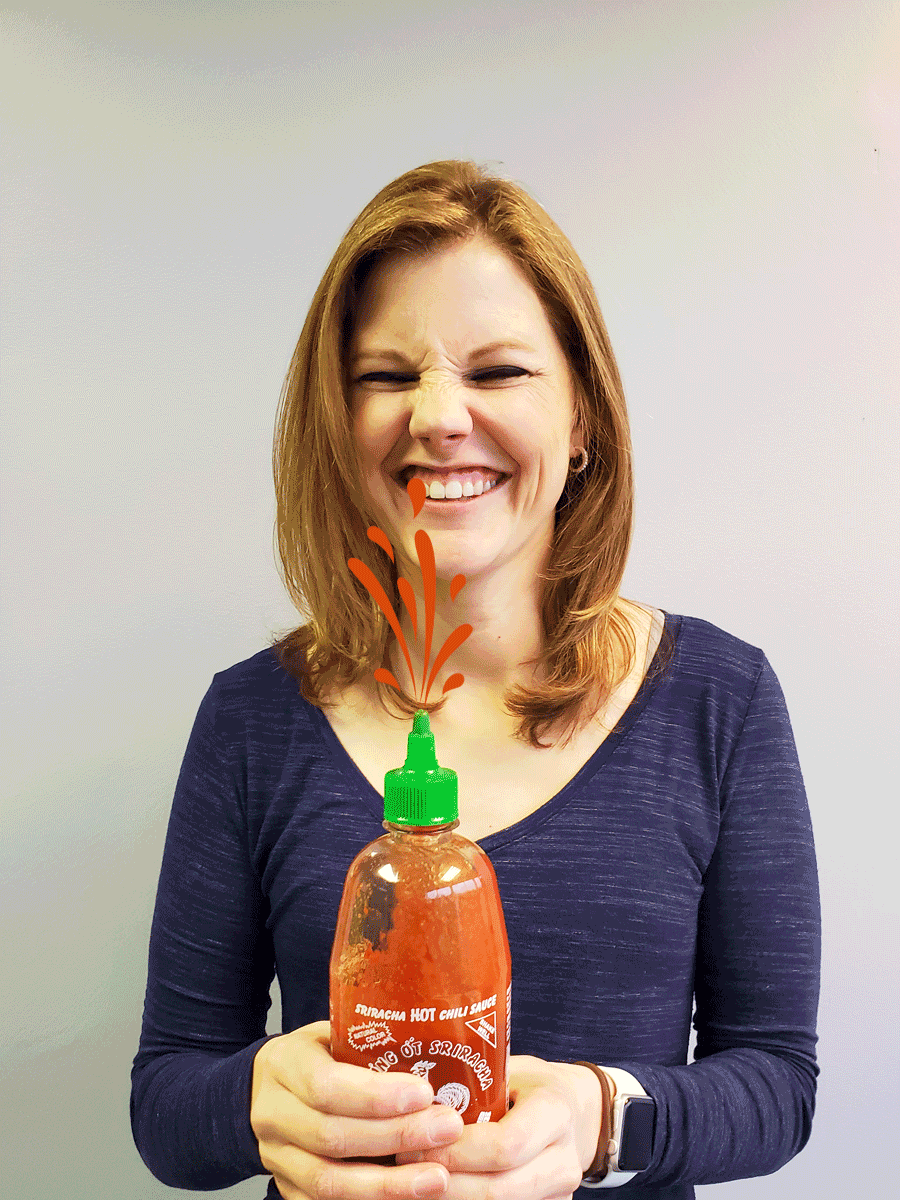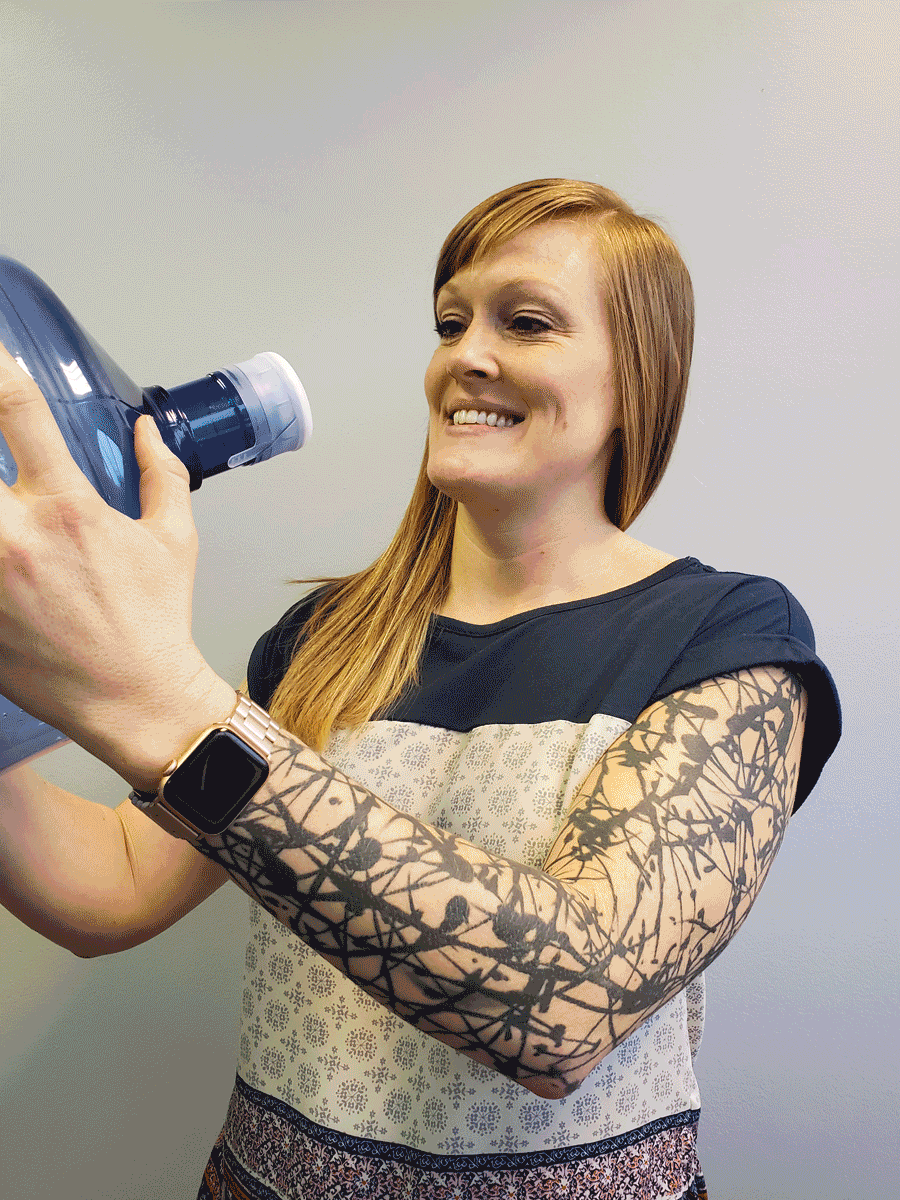IMAGE FORMAT MATTERS – THE ULTIMATE BREAKDOWN OF WHAT FILE TO USE WHEN

Your printer says, “I need that in vector.”
And you’re like…

In a world of JPEG, PDF, PNG, EPS and GIF (wait… is it GIF or JIF?), things can be super confusing! Let me try to explain them all and hopefully next time someone is asking you for a certain file format, you’ll be able to respond with “No problem – Here you go!”
Raster vs. Vector
Raster images are made up of a grid of pixels, or blocks of color that all come together make an image. Think Minecraft. Each pixel has certain proportions, so the image looks great – crystal clear. But if you stretch or shrink that image from its original size, you often end up with a pixelated look – blurry or blocky looking. Raster files are typically photographs, animation, video, and web graphics.
All raster images can be saved in one of two primary color models: CMYK and RGB. CMYK is a four-color printing process that stands for cyan, magenta, yellow and key (black). These colors represent the four inks that are used during the printing process. Files saved in this format are meant primarily for printing. RGB is a light-based color model that stands for red, green and blue. These are the three primary colors of light that combine to produce other colors. Files saved in this format are ideal for anything that will be viewed on a screen – computers, mobile phones, video games, television, etc.
Vector files, on the other hand, are made up of points, lines, curves in a specific proportion that is calculated by the computer – instead of using blocky pixels like in raster images. In the more sophisticated vector format, all of the equations that make up a graphic can be adjusted in size infinitely without losing resolution. You can make create billboard-sized graphics or make them tiny enough to be printed on a pen and the image would look equally clear on both.
So let’s jump into the different file formats!
- JPEG/JPG (Joint Photographic Experts Group)
- PNG (Portable Network Graphics)
- GIF (Graphics Interchange Format)
- TIFF/TIF (Tagged Image File Format)
- RAW
- PSD (Photoshop Document)
- PDF (Portable Document Format)
- EPS (Encapsulated PostScript)
- SVG (Scalable Vector Graphics)
- AI (Adobe Illustrator)
Description:
- Most common image file
- Go-to, cover-your-bases kind of file
Use For:
- Proofing and sharing work-in-progress
- Web
- Web banners/ads
- Social Media
- Print (ensure you have high resolution files!)
Do Not Use For:
- Transparent backgrounds
- Versatile pieces where resizing is needed
Description:
- Common image file
- Smaller file size without a loss in quality
- Less blur than JPGs when resized
- Supports transparent backgrounds
Use For:
- Web
Do Not Use For:
Description:
- Supports transparent backgrounds (but not as well as PNG)
- Widely used for animated graphics like for social media or texting
- Smaller file size
Use For:
- Web
- Social Media
- Animation
Do Not Use For:
Description:
- Highest-quality image files
- Scanned documents
- Professional digital camera
Use For:
- Photography
- Large format
Do Not Use For:
- Web
Description:
- Unprocessed data from a digital camera or scanner’s sensor
- High-quality image containing both processed and non-processed data
Use For:
- Use program, like Photoshop, to adjust color, tints, brightness, etc.
- Then it is saved as a JPEG or TIFF because it has been processed.
Do Not Use For:
Description:
- Fully editable design file
- Can be exported (saved) as a JPEG, PNG, PDF, GIF, TIFF, etc.
Use For:
- Creating and editing raster file types
Do Not Use For:
- Logo design
- Illustrations
Description:
- Designed to be easily shared between computers, programs, people
- Contains text and raster & vector images
- Retains look (font, images, etc.)
- Can be editable
Use For:
- Digital
- Multiple pages
Do Not Use For:
- Photography
Description:
- One of the most preferred formats by digital designers
- Resolution-independent and infinitely scalable (looks good at any size)
- Supports transparent background
- Fully editable
- Can be exported/saved to various formats (jpg, png, etc.)
Use For:
- Illustration
- Logo Design
Do Not Use For:
- Web
Description:
- Resolution-independent and infinitely scalable, (looks good at any size)
Use For:
- Web
Do Not Use For:
- Sharing files (not well known)
Description:
- Fully editable design file
- Can include embedded or linked raster images
- Can be exported/saved to any format (EPS, PDF, JPEG, PNG, GIF, TIFF, etc.)
Use For:
- Logo design
- Large format design
Do Not Use For:
- Photography
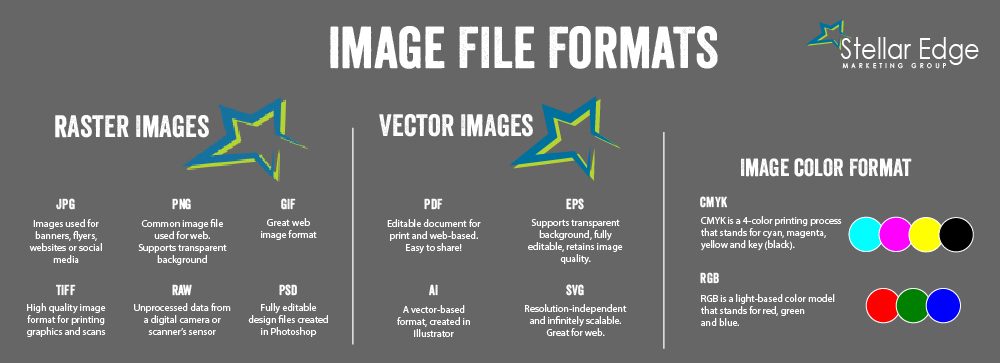
Did you ever realize there were so many different file formats for images? Hopefully, this helps you understand the various image files, and in turn, what formats you can ask for to help your next project!

 MEET JENNA MANZANO
MEET JENNA MANZANO MEET JENNY LIPINSKI
MEET JENNY LIPINSKI MEET MADDIE CARR
MEET MADDIE CARR MEET ISABELLA PARISE
MEET ISABELLA PARISE MEET ALLISON BOROSKI
MEET ALLISON BOROSKI MEET UTAH
MEET UTAH MEET CHRISTIANA HARRIS
MEET CHRISTIANA HARRIS MEET JENNIFER GDULA
MEET JENNIFER GDULA MEET JOHN SOPCHYK
MEET JOHN SOPCHYK MEET JULIANNA KLECKA
MEET JULIANNA KLECKA MEET RICK GIBSON
MEET RICK GIBSON MEET JULIE HRDLICKA
MEET JULIE HRDLICKA



